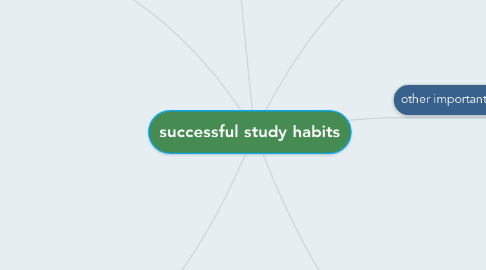
1. whole and part learning
1.1. whole method with extra studying for parts
1.1.1. 1. Read everything carefully once or twice.
1.1.2. 2. Separate out the more difficult sections for extra study and reinforcement.
1.2. whole-part-whole method
1.2.1. 1. Go through all the material a couple of times quickly.
1.2.2. 2. Break up the material into logical parts that you study separately.
1.2.3. 3. Go back and review everything from beginning to end.
1.3. progressive part method
1.3.1. 1. Break up the material into sections and begin studying the first part.
1.3.2. 2. Move on to studying the second part but study the first part again along with the second part.
1.4. use the serial position effect
1.4.1. If the items do not need to be in a certain order, arrange your list so the more complicated, less meaningful items are at the beginning and the end of the list. Put the simpler, more meaningful items in the middle.
1.4.2. If you can't change the order of the items, spend more time and effort studying the items in the middle.
2. use of a study system
2.1. for example: SQ3R
2.1.1. 1. Survey
2.1.1.1. Survey the material to understand the framework of the information.
2.1.2. 2. Question
2.1.2.1. Go through the same parts you just surveyed and ask yourself questions about each aspect.
2.1.3. 3. Read
2.1.3.1. Read the paragraphs and other detailed sections.
2.1.4. 4. Recite
2.1.4.1. Work through the chapter and read each heading and subheading. Ask yourself questions about the headings, and answer from memory.
2.1.5. 5. Review
3. recitation
3.1. verbal repetition of material
3.1.1. get together with a partner and quiz each other
3.2. non-verbal repetition of material
3.2.1. use flash cards
4. reduction of interferences
4.1. overlearn the material
4.2. use seperate study sessions
4.3. make it meaningful
4.3.1. familarity
4.3.2. ryhmes
4.3.3. patterns
4.4. minimize intervening activity
4.5. do not study similar subjects together
4.6. differentiate between subjects
4.6.1. use different colours
4.6.2. study in different rooms
5. space out the studying - no cramming!
5.1. three reasons why spaced learning is better than cramming
5.1.1. limitation of attention
5.1.2. consolidation during breaks
5.1.3. variation of moods and form on the day
5.2. set shorter periods for harder subjects and longer periods for easier subjects
6. other important advices
6.1. the right mindset
6.1.1. aim to think positively when you study, and remind yourself of your skills and abilities
6.1.2. avoid catastrophic thinking
6.1.3. avoid absolute thinking
6.1.4. avoid comparing yourself with others
